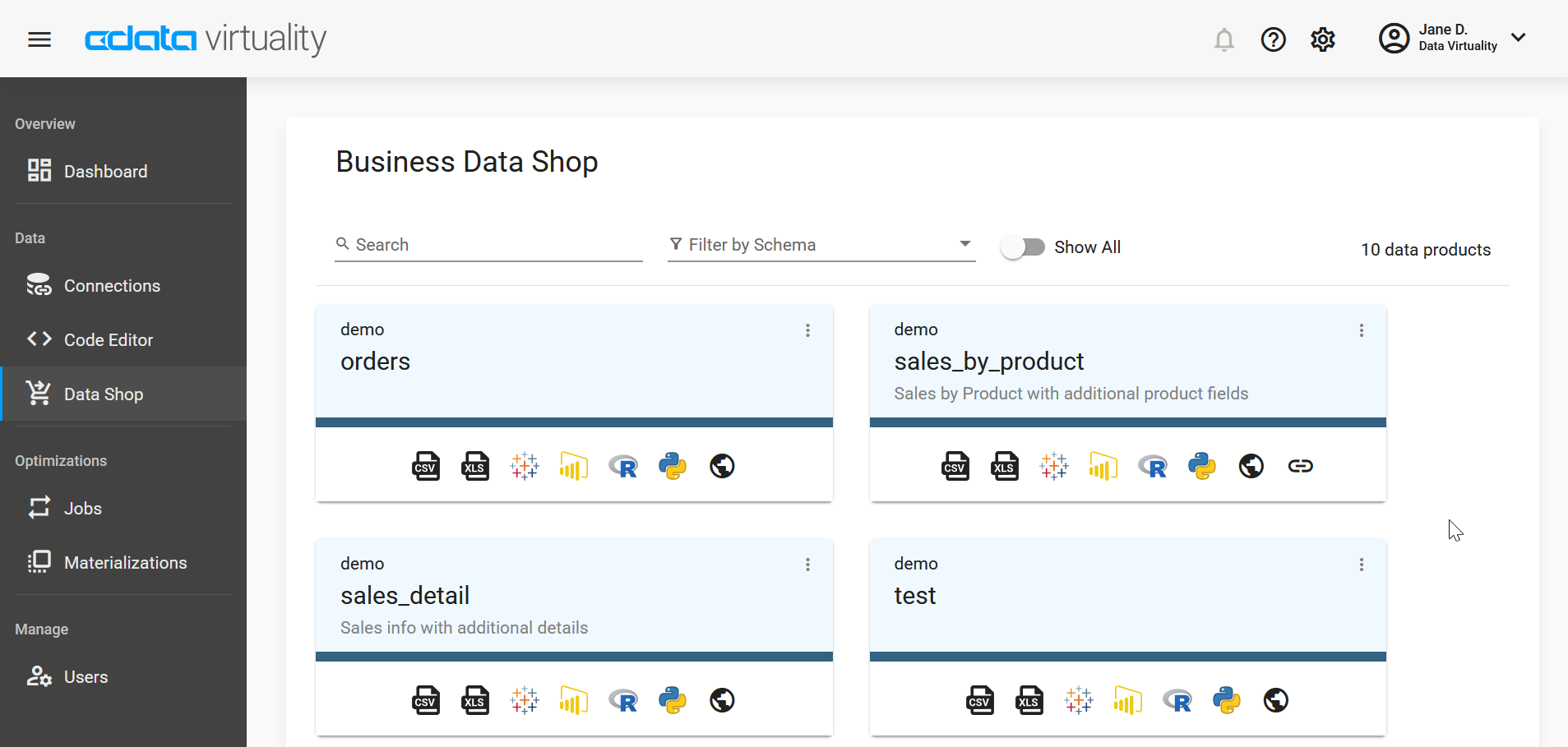Data Shop
The Web Business Data Shop allows data domain owners to publish certain data items (tables and views). The data consumers will be able to download and access the data products you created for them. It is filled when you publish a virtual view of your data model:

Web Business Data Shop at a Glance
The Web Business Data Shop is a data catalogue aimed to ease access to certain data items and implement the Data Mesh architecture. These catalogues provide a comprehensive view of all data assets within an organization, including metadata, lineage, and usage information. This makes it easier for teams to discover and understand the data they need, reducing the time and effort required to find and use data.
The Data Mesh is a new approach to data architecture that emphasizes decentralized data ownership and domain-driven design. It provides a framework for organizations to manage their data as a product, with each domain responsible for its own data assets. This approach allows teams to work more independently and efficiently, while still maintaining a high level of data quality and consistency.
The benefits of a Data Mesh include increased agility, faster time-to-market, and improved data quality. By decentralizing data ownership, teams can work more independently and make faster decisions. This also reduces the risk of data silos and improves data quality, as each domain is responsible for its own data assets.
Publishing and Working with Data Items
Here are some things to keep in mind:
Data items can be published to the Web Business Data Shop via dedicated procedures and/or the CData Virtuality Web UI;
Data Items are only visible to users who have permission to view those items;
System objects (tables and views belonging to system schemas) cannot be published to Web Business Data Shop;
Data items can be supplied with additional attributes, some of which can be displayed in the Web Business Data Shop (for example, the 'owner');
The results of running queries behind data items can be exported in several formats. Export formats are configurable via dedicated procedures;
Queries that lie behind data items can be modified in the Code Editor when necessary.
